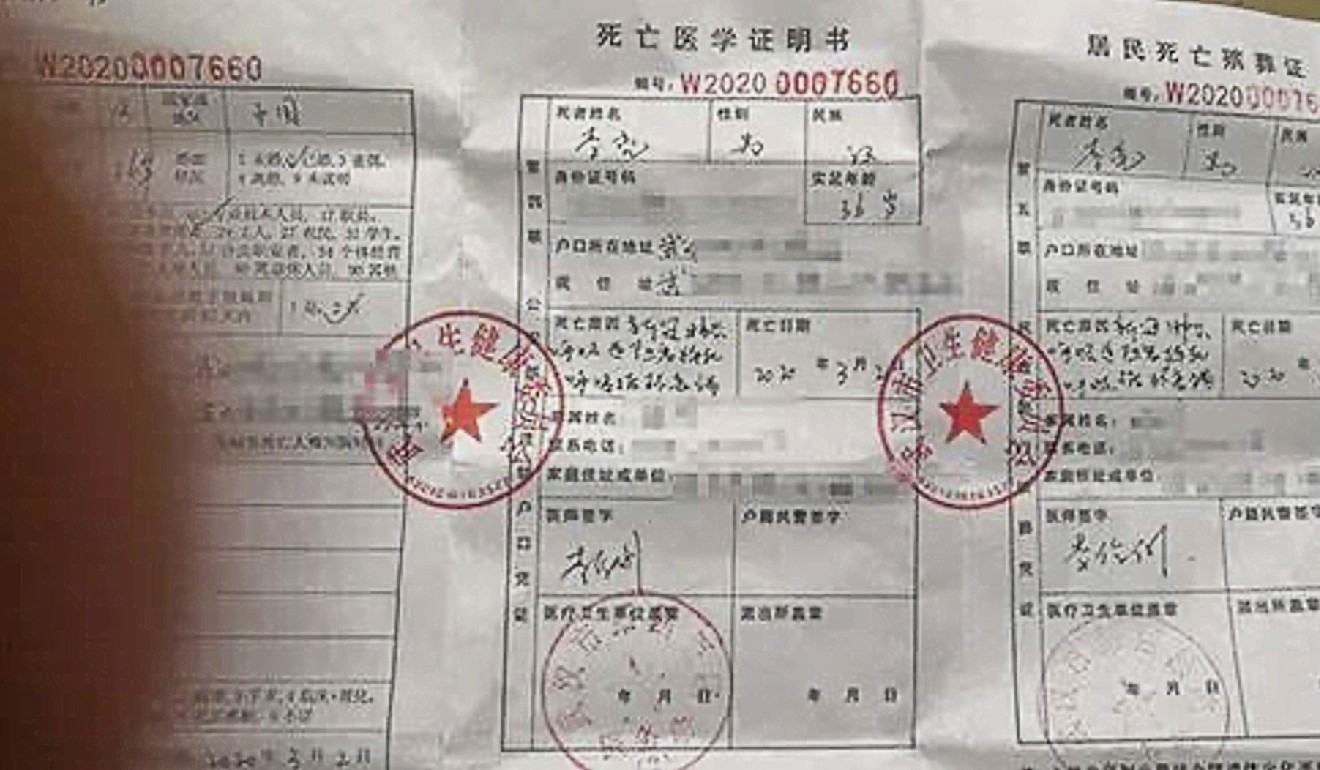Why did a ‘cured’ coronavirus patient die in China? His widow wants answers
- Li Liang appeared to have recovered from a mild case of Covid-19 until his condition suddenly worsened at a temporary quarantine facility in Wuhan
- Li’s wife held him in her arms as breath faded and his body went cold

Phoebe Zhang
Published: 7:09pm, 6 Mar, 2020
2.4k
Temporary medical facilities have been set up throughout Wuhan to treat mild cases of Covid-19. Photo: EPA-EFE
Wang Mei had expected her husband to come home from quarantine this Tuesday.
Her husband, 36-year-old Wuhan bonesetter Li Liang, developed a fever in early February and had been admitted to one of the city’s 16 temporary medical centres set up to treat mild cases of
Covid-19, a disease caused by a new coronavirus.
Five days after the father-of-one was discharged and certified “cured”, Li was dead, leaving his family bereft and his wife on a hunt for answers.
Wang has been calling local government offices every day for an explanation.
Advertisement
All seemed fine even after Li was admitted to Hanyang Fangcang Hospital on February 12, with the couple keeping in touch with daily video chats.
“He only had a low temperature when he was admitted, only just a bit of coughing,” she said. “In hospital, he took [traditional Chinese] herbal medicine twice a day. Later he even became a volunteer at the hospital, moving supplies.”
LUNAR NEWSLETTER
Get updates direct to your inbox
SUBSCRIBE
By registering, you agree to our
T&C and
Privacy Policy
About 10 days later, Li had two swab tests and both came back negative for the coronavirus.
But he also had a CAT scan, the results of indicated that Li’s lungs had been damaged and not fully recovered, independent medical experts said.
Read more

Why do ‘recovered’ coronavirus patients test positive again?
Read more
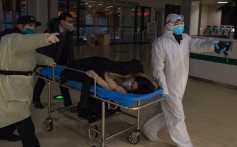
‘Recovered’ Covid-19 patient dies as China reports more repeat cases
According to a copy of the CAT scan report, Li’s lungs had “scattered shadows with high density, most with ‘ground-glass’ opacities, some with reticular opacities” as well as “small lung nodules in bilateral lower lobes”. It recommended that he be re-examined.
Doctors consulted by the
South China Morning Post said it would be difficult to tell from the CAT scan alone whether a patient had recovered.
Instead, three days after the CAT scan, Li was discharged to a temporary quarantine centre at the Vienna Hotel in line with diagnostic guidelines for discharged patients.
Advertisement
According to Wang, Li was in high spirits in the first few days after he settled in at the temporary centre. He exercised every morning and took the herbal medicine as prescribed by the doctors.
But at around February 28, he told Wang his mouth felt dry and his stomach bloated, and he lost appetite. He consulted the doctors about his condition, but was told that it was normal after taking the medicine, telling him to drink more water and eat more fruit.
Three days later, on Sunday, Wang called Li again but he could only speak for a few minutes before he ended the call to rest. Wang said she did not suspect too much, because doctors checked in on all the patients every day to take their temperature.
On Monday, during the daily morning check, Li’s temperature wasn’t high. While on a video chat, Wang heard the doctors tell her husband to put on more clothes and get some breakfast.
She didn’t hear back until 3pm, when staff called Wang to go to the hotel, saying Li seemed “stressed”.
She found her husband lying on the bed unable sit up. As she held him he told her that he wanted to home.
Wang called for help and medical personnel in protective gear came. They checked Li’s pupils and asked Wang to call the ambulance.
“He had been recovering fine, why did I need to call the ambulance within 10 minutes of my arrival? I was so anxious that I even dialled the number wrong the first time,” she said.
As other patients came and helped Wang call the ambulance, Wang felt her husband’s body go cold and his breathing weaken. Soon after they arrived at the nearby Puai Hospital, the doctors there told Wang that her husband had died and gave her the death certificate. She cried at the hospital for hours, until staff from the funeral home came to collect the body.
Li Liang’s death certificate. Photo: Handout
Li’s death has clouded hopes of a reprieve for the city.
By March, thousands of patients had been discharged from Wuhan’s makeshift hospitals and one of them had been shut down.
Epidemiologists had been hopeful that
the spread of the disease in China had turned a corner
. On Thursday, a senior researcher said that there may be no more new cases in mainland China, except in Hubei, by mid-March, and Wuhan hopefully would not have daily new cases in late March.
But, according to Jiemian News, Li’s death prompted a number of city’s makeshift hospitals to suspend plans to discharge the patients, pending new blood tests.
In the meantime, Wang has appealed to government offices and community centres for answers. She wants an explanation for her husband’s death and wonders why he was not sent back tohospital earlier.
“On March 1, he already felt under the weather. On March 2, I watched him pass away, how can that happen?” she said. “They didn’t even try to resuscitate him.”
She said staff should have paid attention when her husband showed signs he was unwell.
An employee at the reception desk for the Vienna Hotel said that only the local health commission was authorised to answer questions about Li’s death. Repeated telephone calls to the commission office went unanswered.
Wang is not optimistic about getting answers any time soon. Community officials in her area said they would need to report the case to their superiors. A previous report from Shanghai-based news portal The Paper about the death of her husband has since been removed from the paper’s website. A similar report by news site Caixin has also been withdrawn.
Li was the backbone of the family and had always been healthy, she said.
“Our lives have been turned upside down,” Wang said. “No matter what happens, I want an answer [for his death].”
Purchase the China AI Report 2020
brought to you by SCMP Research and enjoy a 20% discount (original price US$400). This 60-page all new intelligence report gives you first-hand insights and analysis into the latest industry developments and intelligence about China AI. Get exclusive access to our webinars for continuous learning, and interact with China AI executives in live Q&A. Offer valid until 31 March 2020.
This article appeared in the South China Morning Post print edition as: wife demands answers over her ‘cured’ husband’s death
China / Society
Coronavirus: why do ‘recovered’ patients test positive again?
- Despite the hospital release criteria set by Beijing, doctors say some people are being allowed home while still infected with the disease
- But new tests are in development that could make the diagnostic process more effective

Mandy Zuo
Published: 11:00pm, 4 Mar, 2020
1.6k
Some Chinese doctors say coronavirus patients are being given a clean bill of health and released from hospital too soon. Photo: Xinhua
A number of
coronavirus
patients in mainland China have tested positive for infection after earlier being cleared, according to official figures, though medical experts say it is unlikely they were infected twice and have warned against releasing people from hospital prematurely.
As of Tuesday, the virus had infected more than 80,000 people in mainland China, of whom more than 47,000 had been released from hospital, official data showed.
They were released after being getting a negative result in a reverse transcriptase-polymerase chain reaction (PCR) test – the most commonly used when testing for infection – but then tested positive again days or even weeks later.
On Monday, two people in the northern port city of Tianjin, where more than 130 cases have been confirmed, were sent back to hospital after testing positive for Covid-19 about a week after being told they had recovered from it. An earlier case involved a patient who tested positive for the disease two weeks after being sent home, the local health authority said.
In south China’s Guangdong province, 14 per cent of coronavirus patients released from hospital were later found to still be infected, the provincial disease control centre said last week.
Similar cases have been reported in other parts of the country, including Jiangsu and Sichuan provinces.
Why are people testing positive twice?
“It’s not that these people get a second infection, or a persistent infection, as some worried,” said Professor Jin Dong-yan, a molecular virologist from the Li Ka Shing Faculty of Medicine at the University of Hong Kong.
It was either because the tests were not done properly in the first place, or the patient was undergoing a long course of the disease, he said.
The coronavirus has infected more than 80,000 people in mainland China. Photo: Xinhua
Various factors could cause the test results to be inaccurate, including the quality of the test kit and the way the sample was collected and stored, Jin said.
LUNAR NEWSLETTER
Get updates direct to your inbox
SUBSCRIBE
By registering, you agree to our
T&C and
Privacy Policy
Under China’s testing criteria, people can be released from hospital if their body temperature is normal for three days, they have no respiratory problems, and the chest lesions shown on the computed tomography have significantly improved. They must also test negative in two consecutive negative PCR tests at least one day apart.
Germany warns: virus outbreak a ‘global pandemic’, worse to come
5 Mar 2020

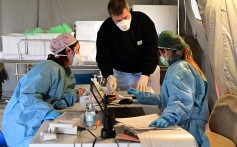
Wang Chen, head of the Chinese Academy of Medical Sciences, said last month that only 30 to 50 per cent of confirmed cases had a positive result in the PCR tests, and throat swabs had possibly generated many fake negative results.
As a result, China’s health authorities suggested combining epidemiological history, clinical and imaging manifestations with the PCR test in diagnosing Covid-19.
Read more
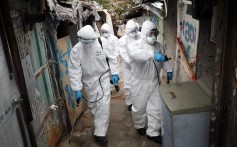
Coronavirus: there are 2 different types of the strain, Chinese study finds
Read more
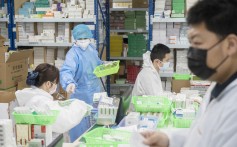
Coronavirus: China’s factory closures could cause global medicine shortages
Read more
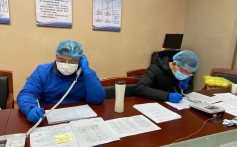
Behind the masks: the volunteers giving everything in the coronavirus crisis
Professor Greg Gray from the infectious diseases division at Duke University in the United States and Singapore said that it was unlikely that faulty tests were responsible for the false negatives.
“Assuming the laboratories are experienced in running them, I would not expect lab quality to be the problem,” he said.
“The negative assays might be better explained by a poor quality specimen [not a deep nasopharyngeal swab] or the virus was at a very low count when the swabs were collected.”
Coronavirus fears spark toilet paper panic buying around the world
Are people who have been released infective?
While China’s National Health Commission (NHC) said it had not found any new infections linked to such patients, local officials and doctors are more cautious.
“These patients have not infected other people, and some tested negative in their follow-up tests,” Guo Yanhong, an NHC official monitoring new cases, told a press conference on Friday.
Chinese and US defence chiefs discuss coronavirus crisis in phone call
4 Mar 2020


Song Tie, deputy head of the Guangdong provincial disease control centre, agreed that such patients had not been the source of any new infections but said they might still be infective.
“If a person tests positive, in terms of disease control, he will definitely be considered a source of infection,” he said.
“From laboratory tests, we found that young patients will produce antibodies within two weeks. So even if they have positive results in PCR tests again, the risk of contagion is very low.
“We also found that some elderly patients may need more time to produce the antibodies. So they may keep releasing the virus and become a source of infection,” Guo said.
Zhang Zhan, a respiratory specialist at Renmin Hospital of Wuhan University also warned of possible infection by people who had been previously thought “cured”.
In an article published online on January 31, she said that eight days after one of her patients was deemed to have recovered from the infection a member of his family contracted the disease. The relative had not been in contact with anyone else since his return home.
Gray said: “It is possible to detect traces of the pathogen for some period after the patient is no longer infectious. That is, the patient’s immune system has killed the virus and what you are detecting is nonviable nucleic acid fragments of the virus.
“To investigate one would have to attempt to culture out the virus from the original swab specimens. If the virus grew you would know the virus was viable.”
So how do we stop this happening again?
In an article published last week, Zhang said that patients should be required to produce three negative PCR tests rather than two before being allowed to leave hospital.
Of the 44 people who met the national criteria for release, 26 tested positive in a third test, she said.
“[But] The rate of a positive result [in a fourth test] for those who have tested negative three times is very low,” she said.
Coronavirus: Pakistan quarantines pilgrims returning from Iran
4 Mar 2020

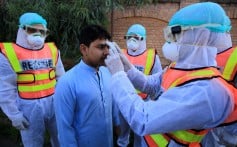
In Shanghai, as well as meeting the release requirements set by the NHC, doctors also require patients to produce a negative test result from an anal swab, to show the virus is not present in their excrement.
Zhang Wenhong, who leads a team of experts in handling the coronavirus outbreak in the city, said that to date none of the patients released there had tested positive for infection in a later test.
Jin said the new testing methods would help to prevent such cases happening, including an antibody test that was being developed but not yet ready for mass production.
“It is easier to conduct and less demanding technically, so when it’s ready, it will be a good supplement to the PCR test,” he said.
Additional reporting by Linda Lew
Purchase the China AI Report 2020
brought to you by SCMP Research and enjoy a 20% discount (original price US$400). This 60-page all new intelligence report gives you first-hand insights and analysis into the latest industry developments and intelligence about China AI. Get exclusive access to our webinars for continuous learning, and interact with China AI executives in live Q&A. Offer valid until 31 March 2020.
This article appeared in the South China Morning Post print edition as: Cleared patients return positive test
 KNN
KNN KNN
KNNKNN

KNN







